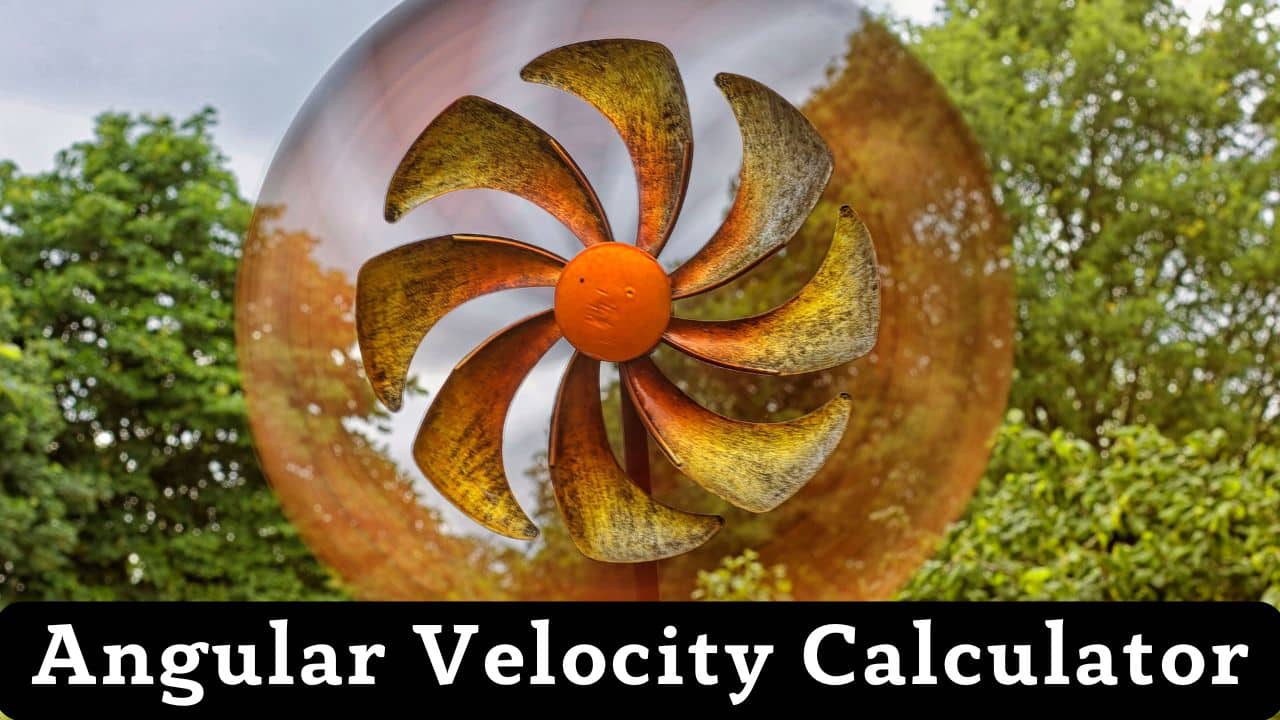
What is Angular Velocity?
Angular velocity is a fundamental concept in rotational motion that describes how fast an object rotates around an axis. Think of it as the rotational equivalent of linear velocity – while linear velocity tells us how fast something moves in a straight line, angular velocity tells us how fast something spins.
Key characteristics of angular velocity:
- Vector quantity: Has both magnitude and direction (following right-hand rule)
- Symbol: ω (omega) – Greek letter representing angular velocity
- SI unit: radians per second (rad/s)
- Common units: RPM (revolutions per minute), degrees per second
- Always measured about an axis: The axis of rotation determines the direction
The Fundamental Formula: ω = θ/t
The most basic definition of angular velocity comes from the rate of change of angular position over time. This simple relationship forms the foundation for understanding all rotational motion.
Understanding ω = θ/t:
- ω (omega): Angular velocity measured in rad/s
- θ (theta): Angular displacement measured in radians
- t: Time interval measured in seconds
- Relationship: Greater angle in same time = higher angular velocity
- Sign convention: Positive for counterclockwise, negative for clockwise
This formula tells us that angular velocity is simply the angle covered divided by the time taken. Just like linear velocity (distance/time), angular velocity gives us the rate of rotational motion.
Essential Angular Velocity Formulas
Different situations require different approaches to calculate angular velocity. Here are the most important formulas every student should master:
Linear-Angular Relationship: ω = v/r
- Application: When you know linear speed and radius
- v: Linear velocity (tangential speed) in m/s
- r: Radius from axis of rotation in meters
- Key insight: Points farther from axis move faster linearly
- Example: Car wheel spinning – tire edge moves faster than points near center
Frequency Relationship: ω = 2πf
- Application: When dealing with periodic motion
- f: Frequency in Hz (cycles per second)
- 2π: Radians in one complete revolution
- Key insight: Higher frequency means faster rotation
- Example: AC electricity, rotating machinery, vibrations
Period Relationship: ω = 2π/T
- Application: When you know the time for one complete rotation
- T: Period in seconds (time for one revolution)
- Inverse relationship: Longer period means slower rotation
- Key insight: Period and frequency are reciprocals (T = 1/f)
- Example: Earth’s rotation, pendulum motion, orbital mechanics
Understanding RPM and Unit Conversions
RPM (Revolutions Per Minute) is probably the most commonly encountered unit for angular velocity in everyday life. Understanding how to convert between different angular velocity units is crucial for practical applications.
RPM to rad/s Conversion: ω = RPM × π/30
- Why π/30? One revolution = 2π radians, one minute = 60 seconds
- Derivation: RPM × (2π rad/rev) × (1 min/60 s) = RPM × π/30
- Common values: 60 RPM = 2π rad/s ≈ 6.28 rad/s
- Applications: Car engines, fans, washing machines, hard drives
Quick Conversion Reference:
- 1 rad/s = 30/π RPM ≈ 9.55 RPM
- 1 RPM = π/30 rad/s ≈ 0.105 rad/s
- 1 rad/s = 180/π deg/s ≈ 57.3 deg/s
- 1 rev/s = 2π rad/s ≈ 6.28 rad/s
Real-World Examples and Applications
Example 1: Car Engine at 3000 RPM
Given: Engine speed = 3000 RPM
Find: Angular velocity in rad/s
Solution: ω = 3000 × π/30 = 314.2 rad/s
Physics insight: The crankshaft completes 50 rotations every second
Real application: This determines power output and fuel efficiency
Example 2: Earth’s Rotation
Given: Earth rotates once every 24 hours
Find: Earth’s angular velocity
Solution: ω = 2π / (24 × 3600) = 7.27 × 10⁻⁵ rad/s
Physics insight: Despite the huge size, Earth spins quite slowly
Real application: This creates day/night cycles and affects weather patterns
Example 3: Bicycle Wheel
Given: Cyclist travels at 15 m/s, wheel radius = 0.35 m
Find: Wheel’s angular velocity
Solution: ω = v/r = 15/0.35 = 42.9 rad/s = 409 RPM
Physics insight: Linear speed and wheel size determine spin rate
Real application: Affects gear ratios and pedaling efficiency
Example 4: Centrifuge Medical Application
Given: Lab centrifuge at 5000 RPM, radius = 0.15 m
Find: Centripetal acceleration experienced
Solution: ω = 5000 × π/30 = 523.6 rad/s; a = ω²r = 41,100 m/s²
Physics insight: This is about 4,190 times Earth’s gravity!
Real application: Separates blood components by density differences
Relationship Between Angular and Linear Motion
Understanding how angular and linear motion connect is crucial for solving complex physics problems and designing mechanical systems.
Key Relationships:
- Linear velocity: v = ωr (velocity increases with distance from axis)
- Linear acceleration: a = αr (tangential acceleration)
- Centripetal acceleration: ac = ω²r (always points toward center)
- Arc length: s = rθ (distance traveled along circular path)
Why Different Points Have Different Linear Speeds:
In any rotating object, all points share the same angular velocity, but points farther from the axis move faster linearly. This is why:
- Ice skaters spin faster when they pull arms in (reducing moment of inertia)
- Car wheels have maximum speed at the tread, zero at the center
- Galaxies show differential rotation – outer stars move faster
- Washing machines create more centrifugal force on larger loads
